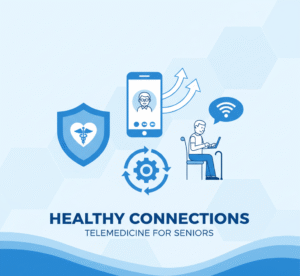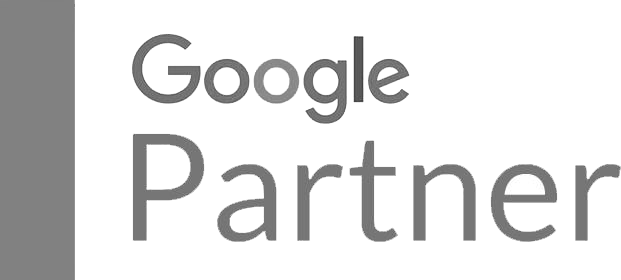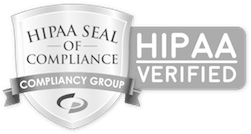“Generate leads and dominate local search for your cardiology practice with expert Cardiology SEO Services, building online authority and attracting more patients.”
In today’s digitally driven world, how patients find and choose healthcare providers has fundamentally changed. Gone are the days when a simple Yellow Pages listing or a word-of-mouth referral was enough to keep a cardiology practice thriving. Now, when a person experiences concerning symptoms like chest pain, palpitations, or shortness of breath, their first action is often to reach out not to a friend, but to a search engine. They type queries like “best cardiologist near me,” “heart specialist in [Your City],” or “what are the symptoms of atrial fibrillation?” into their phone or computer.
The question for your practice is simple: when they search, do they find you?
If your practice isn’t appearing on the first page of Google for these critical searches, you are invisible to a vast and growing pool of potential patients. This is where Search Engine Optimization (SEO) becomes not just a marketing tactic, but an essential business growth strategy. Effective cardiology SEO services bridge the gap between a patient in need and your expert care, ensuring your practice is the one they find, trust, and ultimately, choose.
This comprehensive guide will walk you through the essential components of a robust SEO strategy explicitly tailored for cardiology practices. We will move beyond generic advice and dive deep into the practical steps you can take to dominate local search results, build unmatched authority, and create a predictable stream of high-quality patient leads. This is your roadmap for transforming your online presence into your most valuable patient acquisition tool.
The Foundation: Why Your Website is Your Digital Front Door
Before we even discuss driving traffic, we must address the destination. Your practice’s website is your digital clinic. It’s often the first interaction a potential patient has with your brand. If it’s slow, confusing, or untrustworthy, they will leave and click on your competitor’s site without a second thought. A successful cardiology website optimization strategy rests on a foundation of user experience, speed, and trust.
User Experience (UX): Making it Easy for Patients
Think about your physical office. You want it to be clean, easy to navigate, and welcoming. Your website must be the same.
- Mobile-First Design: The majority of health-related searches now happen on mobile devices. Google recognizes this and primarily uses the mobile version of a website for indexing and ranking (this is called mobile-first indexing). Your website must look and function flawlessly on a smartphone. Text should be easy to read without pinching and zooming, buttons should be large enough to tap easily, and navigation menus must be simple.
- Lightning-Fast Loading Speed: In healthcare, urgency matters. A website that takes more than three seconds to load will lose a significant percentage of its visitors. Patients are anxious; they won’t wait for a slow website. You can use Google’s PageSpeed Insights tool to check your site’s speed. Image size, server response time, and bulky code can slow you down. A fast website isn’t just a convenience; it’s a critical component of healthcare SEO best practices.
- Intuitive Navigation: Potential patients should be able to find what they need within a few clicks. Your main navigation should be crystal clear, with labels like “About Us,” “Our Doctors,” “Conditions We Treat,” “Patient Resources,” and a highly visible “Contact Us” or “Book an Appointment” button. Avoid clever or confusing jargon in your navigation menu. Simplicity wins.
- Clear Calls-to-Action (CTAs): What do you want a visitor to do? Every page should guide them toward the next logical step. Use prominent buttons and links that say things like “Schedule a Consultation,” “Call Our Office Today,” “Download New Patient Forms,” or “Get Directions to Our Clinic.” These CTAs are the engine of lead generation for doctors.
Essential Website Pages for Trust and SEO
A bare-bones website won’t cut it. To build trust and provide Google with the information it needs to rank you, your site should include these key pages:
- Homepage: Your digital lobby. It should immediately communicate who you are (a cardiology practice), your location, and why a patient should choose you. Include high-quality images of your team and facility, patient testimonials, and clear pathways to your most important pages.
- About Us/Our Team: This is one of the most crucial pages for building trust. Patients want to know about the cardiologists who will be caring for them. Include detailed biographies for each physician, highlighting their education, board certifications, specializations, and personal philosophies on patient care. Professional headshots are non-negotiable.
- Conditions We Treat/Services: This is a goldmine for SEO. Instead of one generic “Services” page, create individual, detailed pages for each primary condition you treat (e.g., Atrial Fibrillation, Coronary Artery Disease, Hypertension, Heart Failure) and procedure you offer (e.g., Cardiac Catheterization, Echocardiogram, Stent Placement). Each page can be optimized to rank for particular patient search queries.
- Patient Resources: This section can make life easier for current and future patients by including downloadable new patient forms, information about accepted insurance plans, pre- and post-procedure instructions, and links to trusted health resources. It demonstrates that you are a helpful, patient-centric practice.
- Contact Us: This page must be flawless. Include your full practice name, address, and phone number (NAP). Make sure this information is identical across all online platforms. Embed a Google Map for easy directions. Provide a simple contact form and list your office hours.
- Blog: We’ll cover this in-depth later, but a regularly updated blog is the most powerful tool for marketing healthcare content and attracting patients through informational searches.
The Compass: Keyword Research for Cardiology
SEO begins with understanding the language of your potential patients. What words and phrases are they typing into Google? These are your keywords. Targeting the right keywords is the difference between attracting random web traffic and attracting qualified patients actively seeking cardiac care.
Understanding Keyword Intent
Not all keywords are created equal. We can generally group them into three categories based on user intent:
- Informational Keywords: The user is looking for information. Examples include: “what causes high blood pressure,” “signs of a heart attack in women,” or “how to lower cholesterol.” While these searchers may not be ready to book an appointment today, providing valuable answers establishes your practice as an authority and keeps you top-of-mind when they are ready for care.
- Navigational Keywords: The user is looking for a specific practice or doctor. Examples: “Cardiology Associates of Houston,” or “Dr. Jane Miller cardiologist.” You should rank number one for these searches without question.
- Transactional/Commercial Keywords: The user is ready to take action. These are the most valuable keywords for direct patient acquisition. Examples: “cardiologist near me,” “best heart doctor in Dallas,” “book appointment with cardiologist,” or “emergency cardiac care [City].”
A practical cardiology digital marketing strategy targets all three types of intent, creating a full-funnel approach that builds awareness, establishes trust, and captures leads.
How to Find Your Practice’s Best Keywords
- Brainstorm Like a Patient: Put yourself in a patient’s shoes. What would you search for if you had a specific symptom or were diagnosed with a condition? Think about particular services like “TAVR procedure specialist” or “pacemaker clinic in [Your Town].”
- Analyze Your Competitors: Look at the websites of other successful cardiology practices in your area. What keywords are they using in their page titles, headings, and service descriptions? SEO tools like Ahrefs or SEMrush can reveal exactly which keywords your competitors rank for.
- Use Keyword Research Tools: Tools like Google Keyword Planner, Ahrefs, and SEMrush are invaluable. You can input a “seed” keyword like “cardiologist” and they will generate hundreds of related ideas, complete with data on how many people search for that term each month (search volume) and how difficult it is to rank for (keyword difficulty).
- Focus on Long-Tail Keywords: While ranking for a broad term like “cardiologist” is excellent, it’s highly competitive. Long-tail keywords are longer, more specific phrases, such as “treatment for congestive heart failure in downtown San Diego.” These keywords have lower search volume but much higher user intent. Someone searching for this is not just browsing but looking for a specific solution. This is a core tenet of advanced medical SEO strategies.
Your Local Lifeline: Mastering Local SEO for Cardiologists
For a brick-and-mortar medical practice, local SEO is not just part of the strategy; it is the strategy. When a patient searches “cardiologist near me,” Google’s primary goal is to provide them with the best, most relevant, and most trusted options in their immediate geographic area. This is where you win or lose new patients.
Your Google Business Profile: The Cornerstone of Local SEO
Your Google Business Profile (GBP) is the free listing in Google Maps and the “Local Pack” box on the search results page. It is, without a doubt, the most critical factor for local search ranking, and optimizing it is not optional.
- Claim and Verify: First, you must claim and verify your listing. This proves to Google that you are the legitimate owner of the practice.
- Complete Every Single Section: Do not leave anything blank. This includes your business name, address, phone number (NAP), website, hours of operation, and services.
- Get Your NAP Consistent: Your Name, Address, and Phone number (NAP) must be 100% identical across your website, GBP, and all other online directories. Even a slight difference like “St.” vs. “Street” can confuse search engines and hurt your ranking.
- Choose the Right Categories: Your primary category should be “Cardiologist.”If applicable, add secondary categories like “Medical Clinic,” “Diagnostic Center,” etc.
- Write a Compelling Business Description: You have 750 characters to explain what makes your practice unique. Use this space wisely. Weave in your most important keywords and location, for example: “Our board-certified cardiologists at [Practice Name] in [City, State] specialize in advanced treatments for atrial fibrillation and coronary artery disease. We are committed to providing compassionate, state-of-the-art cardiac care.”
- Upload High-Quality Photos and Videos: Show, don’t just tell. Upload professional photos of your office exterior and interior, doctors and staff, advanced equipment, and waiting room. This builds familiarity and reduces patient anxiety.
- Harness the Power of Patient Reviews: Reviews are a massive ranking factor. Actively encourage satisfied patients to leave a review on Google. Provide them with a direct link to make it easy. Crucially, you must respond to all reviews—both positive and negative. A thoughtful response to a negative review can often win over more potential patients than a dozen positive ones, showing you are responsive and care about patient feedback.
- Use Google Posts: This is a mini-blog or social media feed directly on your GBP listing. Use it to announce new services, introduce a new doctor, share a link to your latest blog post, or promote a health awareness month. This signals to Google that your listing is active and relevant.
- Utilize the Q&A Feature: Proactively populate this section by asking and answering common questions yourself. “Do you accept Medicare?” “What are your hours?” “Is parking available?” This preempts patient questions and provides valuable information directly in the search results.
This comprehensive approach to local SEO for cardiologists will dramatically increase your visibility in the all-important map pack, directly driving calls and direction requests to your practice.
Building Unshakable Trust: Healthcare Content Marketing
In medicine, trust is everything. Patients are entrusting you with their most precious asset: their health. Your online presence must reflect your expertise and authority in your field. This is achieved through strategic healthcare content marketing.
Google holds websites in the medical and financial fields to a higher standard, often called “Your Money or Your Life” (YMYL) pages. To rank this content, Google looks for signals of E-E-A-T:
- Experience: The content creator has real-world, first-hand experience with the topic.
- Expertise: The creator is a subject matter expert. For medical content, this means it should be written or reviewed by a medical professional.
- Authoritativeness: The website and the author are recognized authorities in their field.
- Trustworthiness: The website is secure, transparent, and provides accurate, reliable information.
A blog is the most effective way to demonstrate E-E-A-T and attract patients through informational searches.
Powering Your Practice with a Blog
Each blog post is a new opportunity to rank on Google for a specific keyword and answer a question a potential patient is asking. By creating high-quality, educational content, you stop being a service provider and become a trusted resource.
Blog Post Ideas for a Cardiology Practice:
- Condition Deep Dives: “Everything You Need to Know About Living with Atrial Fibrillation”
- Symptom Explainers: “When to Worry About Heart Palpitations”
- Treatment and Procedure Guides: “What to Expect During a Cardiac Catheterization”
- Preventative Health Tips: “5 Lifestyle Changes to Lower Your Blood Pressure Naturally”
- Technology Updates: “How New Wearable Tech Can Help Monitor Your Heart Health”
Best Practices for Medical Content:
- Author Byline: Every article should have a clear author byline, ideally with a photo and a short bio linking to the doctor’s complete profile. This directly signals expertise.
- Medical Review: Include a “Medically Reviewed By” line that links to the physician’s profile who reviewed the content for accuracy.
- Cite Your Sources: To support your claims, refer to authoritative sources like the American Heart Association, the National Institutes of Health, or reputable medical journals.
- Write for Patients, Not Doctors: Avoid overly technical medical jargon. Explain complex topics in simple, easy-to-understand language. Use analogies and real-world examples.
This content-driven approach to SEO for medical practices does more than attract traffic; it builds a foundation of trust that is essential for acquiring cardiology patients.
The Technical Tune-Up: On-Page and Technical SEO
While content and local signals are paramount, technical excellence is required to ensure search engines can easily find, crawl, and understand your website. This is the “behind-the-scenes” work that makes everything else possible.
On-Page SEO: Optimizing Every Page
On-page SEO refers to optimizing the individual elements of each page on your site.
- Title Tags: This is the blue, clickable headline that appears in the search results. It is a major ranking factor. It should include your target keyword and your practice name or location. Example: “Atrial Fibrillation Treatment in [City] | [Your Practice Name]”.
- Meta Descriptions: This is the short paragraph of text that appears under the title tag in search results. While not a direct ranking factor, it is your sales pitch. A compelling meta description entices users to click on your result over a competitor’s.
- Header Tags (H1, H2, H3): These are the headings and subheadings within your content. They structure your page for readers and search engines. Your main page title should be in an H1 tag, and your main subtopics should be in H2 tags.
- Internal Linking: Link relevantly between pages on your website. For example, in a blog post about hypertension, you should link to your main service page about hypertension treatment. This helps distribute authority throughout your site and keeps users engaged longer.
- Image alt text is a short description of an image you add to your website’s code. It helps visually impaired users and tells search engines what the image is about, providing another opportunity to use relevant keywords.
Technical SEO: The Health of Your Website’s Backend
- HTTPS Security: Your website must have an SSL certificate (indicated by “https://” in the URL). This encrypts data between the user’s browser and your server. It’s a non-negotiable trust signal and a confirmed Google ranking factor.
- XML Sitemap: This file lists all the essential pages on your website. Submitting it to Google Search Console helps ensure that Google can find and index all your content.
- Schema Markup: This type of code you add to your website to help search engines understand your content more deeply. Specific schema types for MedicalClinic, Physician, and MedicalCondition explicitly tell Google what you are, who you are, and what you do. This can lead to “rich snippets” in the search results, like star ratings or FAQs, dramatically improving your click-through rate.
The Final Step: Partnering for Success
As you can see, a successful SEO strategy for a cardiology practice is a complex, multifaceted, and ongoing process. It requires web development, content creation, local search, and technical analysis expertise. While the principles are straightforward, the execution demands time, resources, and specialized knowledge—time you and your staff must dedicate to patient care.
This is where a specialized agency can be a game-changer. Trying to manage this in-house often leads to missed opportunities and frustrating results. The online marketing landscape for cardiologists is competitive, and a DIY approach is usually no match for competitors with expert teams behind them.
This is why so many leading cardiology practices nationwide trust InvigoMedia.
InvigoMedia isn’t just another digital marketing agency. We are specialists in the healthcare space, with a deep and proven understanding of what it takes to grow a medical practice online. We live and breathe cardiology digital marketing, and our entire process is built around delivering one thing: more qualified patients to your practice.
Our team of experts handles every aspect of your online presence, from a comprehensive website audit and technical optimization to creating authoritative, E-E-A-T-compliant content that establishes you as the leading cardiac expert in your area. We are masters of local SEO for cardiologists, meticulously optimizing your Google Business Profile and building your local authority to ensure you dominate the “near me” searches that matter most.
We understand the nuances of marketing in the medical field, including HIPAA compliance and the importance of building patient trust. We don’t offer generic, one-size-fits-all solutions. We partner with you to understand your practice’s unique goals, strengths, and patient demographics to build a custom cardiology SEO services strategy designed for maximum return on investment.
Stop letting potential patients slip through the cracks into your competitors’ waiting rooms. It’s time to build a dominant online presence that reflects the quality of your medical care.
Contact InvigoMedia today for a free consultation and let us show you how we can help your cardiology practice achieve predictable, sustainable growth.
Frequently Asked Questions (FAQs)
1. How long does it take for cardiology SEO to show results?
SEO is a long-term strategy, not a quick fix. While some improvements, like optimizing your Google Business Profile, can yield results in as few as weeks, a comprehensive strategy takes time. You can typically expect meaningful movement in rankings and an increase in organic traffic within 4-6 months, with results continuing to build and compound over time. The investment pays dividends for years to come.
2. Can I do SEO for my cardiology practice myself?
While learning and implementing some basic SEO is theoretically possible, it’s a significant undertaking. Effective medical SEO requires a deep understanding of technical SEO, content strategy for YMYL topics, local search algorithms, and constant adaptation to Google’s updates. Most practice managers and physicians find that their time is far better spent focusing on patient care and operations, while entrusting their online marketing for cardiologists to a specialized agency.
3. Is SEO better than paid ads (like Google Ads)?
They are different tools for different jobs, and they work best together. Paid ads (PPC) can generate traffic and leads immediately, which is great for short-term goals. However, the moment you stop paying, the traffic stops. SEO builds a long-term, organic asset. Ranking on the first page of Google organically generates “free” traffic 24/7 and builds more trust with users than paid advertisements. A robust cardiology digital marketing plan often incorporates both.
4. How critical are patient reviews for my practice’s SEO?
Extremely important. Patient reviews are a major ranking factor for local SEO, especially for your Google Business Profile. The quantity, quality (star rating), and frequency of your reviews send strong signals to Google about your practice’s prominence and trustworthiness. Furthermore, 90% of patients use online reviews to evaluate physicians, making them critical for search engines and potential patients.
5. What is the most critical part of SEO for a cardiologist?
If we had to choose just one, it would be Local SEO, with the absolute cornerstone being a fully optimized Google Business Profile (GBP). Because healthcare is inherently local, appearing in the Google Map Pack for “near me” and city-specific searches is the most direct way to attract new patients actively looking for care in your area.
6. Why is content marketing and blogging so crucial for doctors?
Content marketing is crucial because it addresses Google’s E-E-A-T (Experience, Expertise, Authoritativeness, Trustworthiness) guidelines, which are especially strict for medical websites. By publishing high-quality, expert-written articles that answer common patient questions, you are proving to both Google and potential patients that you are a credible authority in cardiology. This builds trust long before they enter your office and attracts patients in their healthcare journey’s early research phase.













